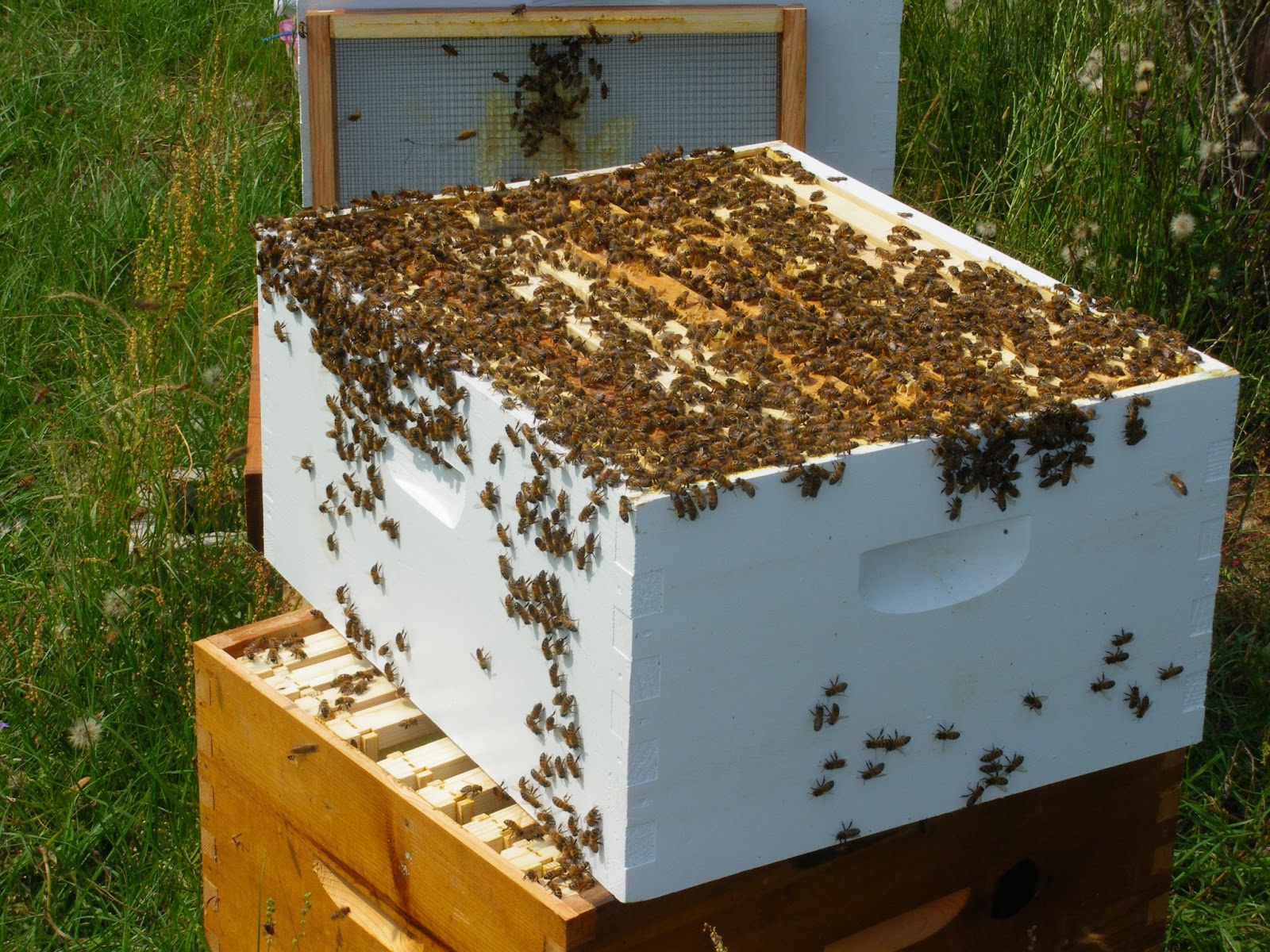Sunday, I inspected my hives with the intention of adding another deep box to each if they needed it. I was trying to get to the bees with lots of daylight left so the foragers would all be too busy to attack me. No such luck. I got there about 30 minutes before sundown and it was getting cool fast.
So I gear up...no wait, I just ran out there in a t-shirt and figured "This'll only take a second, I don't need any of that silly bee gear.". Lets just say beekeeping is an eye opener.
The car, smoker, jacket, hive tool, wife, and friends are about 100 yards away. The latter two eyeing me with what appeared to be a mix or suspicion and hope. Likely hope that I get stung so they can laugh at me. Well, it was their lucky night.
I approached the first hive with confidence. I opened the outer telescoping cover to get a good look at the screened inner covers I made last week. Remember those? Well, lets just say this particular one was not bee proof. There inside the attic of my (well I suppose it is "their") hive were five or six bees. As I watched another one came out the single hole where due to variations in the cloth, one hole nearly lined up between the two sheets of hardware cloth. Not to mention, the were out of room in the hive and started building a considerable amount of burr comb on top of the frames and filing it with honey. This is when the trouble starts.
To add the new deep box, I have to take off the inner cover. If I do that I am going to break a lot of burr comb. I figured the bees loved me and started the operation sans protection and smoke. The bees did not see things my way. As a matter of fact, they were quite upset with me when I popped off the inner cover and broke all that comb then proceeded to try to scrape some off. I got stung here, so the spectators were appreciative.
At this point I tried just setting the new box on top of it. Nope, it was built up too high. I was going to have to scrape it off. Time to go to the car and get the tools I should have had in the first place. I also got a bowl for the scraped comb.
Lighting a smoker is one of the arts of beekeeping that eludes me. In my hands it is either a flame thrower or a cold pit of ashes. After several attempts, I finally get a meager stream of smoke to come out. I put on my veil and arm myself with my hive tool. I give the bees a little smoke to get them off the burr comb and commence to scraping.
Incidentally, smoking bees is a good way to get them out of your way. I am not sure "calm" describes it. I am pretty sure they smell the smoke and then raid the hive eagerly consuming whatever honey they can shove down their gullets. They are not gentle with the combs or caps. I don't really like smoking the bees.
So I get the comb scraped off, I am happy with the progress the hive is making and put it all back together, escapable screened inner cover and all.
I did have a nice bowl of what could arguably be called my first honey. Blackberry blossom honey, as a matter of fact. Unfortunately there were bees stuck in it.
On to the second hive. The hive I am worried about. As I inspect each and every frame, I see no sign of the queen I had hoped would hatch. Every frame that had comb drawn on it was filled with nothing but honey and pollen. No eggs, no drones, no larvae. Now I am worried if I have enough time to add a queen before all the workers die off.
I have a quick internal debate on whether I should combine the hives or add a queen. As I would hate to try to carry only one hive through the winter, I opted for getting a new queen.
I closed up the hive and told them to hang on, I will be back tomorrow with a new queen for them.
I carried the honey covered hive tool, lighter, and bowl of comb back to the waiting crowd. After we picked the bees out we got to enjoy our first taste of honey from the new hive. It was wonderful. I wish I had enough to bottle or an entire frame to make some comb honey from. Next year I will plan ahead and try to get a frame or two of blackberry honey.
Here they are with two deep brood boxes each.
-Robert






















